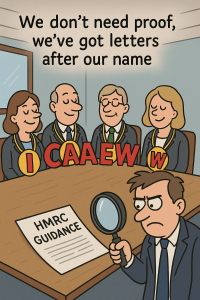Speaking with someone in the business world today, I learned of a stark and troubling consequence of the recent changes to employer costs in the UK. One of their clients, unable to absorb the financial strain, has made 30 staff redundant. The reason is simple and serious. The latest rises in employer National Insurance and associated payroll taxes are creating an unsustainable burden, particularly for small and medium-sized enterprises.
Behind the headlines, this is what it looks like on the ground. Jobs are being lost. Growth plans are being halted. Young people are being turned away from training schemes and apprenticeships. While government statements may speak of fiscal responsibility or budget balancing, the real-world effect is contraction, not confidence.
A key figure being discussed by many business owners is that employing someone on the new National Living Wage now costs an employer around £3,000 more per year than it did just a year or two ago. This is not an exaggeration. It is based on current figures, and here is how that cost breaks down:
As of April 2025, the National Living Wage has risen to £11.44 per hour. For a full-time employee working 37.5 hours per week, this equates to an annual wage of £22,308. That is an increase of nearly £2,000 on the previous rate of £10.42 per hour, which totalled £20,319 a year. Employer National Insurance, charged at 13.8 percent on earnings above £9,100, rises from £1,546 to £1,818. Employer pension contributions, typically at 3 percent, rise from £610 to £669. When you factor in increased holiday pay and associated costs, the total additional annual cost per employee comes to between £2,500 and £3,000.
For SMEs, this is not a minor adjustment. It is a direct hit on their ability to sustain and grow their teams. Unlike large corporations, SMEs typically operate with tighter margins and less financial buffer. These are businesses that form the backbone of the UK economy. They include independent retailers, small manufacturers, local service providers, construction firms, creative agencies, and start-ups. Each employs people in local communities. Each is now being forced to choose between raising prices, reducing staff, or pulling back entirely from long-term investment in skills and development.
One of the most significant casualties in this environment is apprenticeship schemes. SMEs have long been champions of training young people, offering them practical routes into skilled work. However, when the cost of employing even a junior worker becomes too high, these programmes are often the first to go. That is not just a loss to individual young people seeking a foothold in the job market. It is a loss to the economy as a whole, compounding the UK’s skills gap and weakening future competitiveness.
In the longer term, this creates a vicious cycle. Fewer apprentices means fewer skilled workers. That leads to greater dependence on expensive contractors or imported labour, both of which further raise costs. Productivity suffers. Growth stagnates. And with reduced employment comes reduced consumer spending, which affects every business, not just those making redundancies.
The solution is not as simple as freezing wage levels or slashing employer contributions. Workers deserve fair pay, and the country needs a strong tax base. But if policy changes are introduced without a realistic appreciation of the pressure they place on small employers, the consequences will continue to ripple outward.
What is needed now is a serious national conversation about balance. Balance between fair wages and sustainable employment. Between tax income and economic vitality. Between short-term gains to the Treasury and long-term investment in the country’s future workforce.
Ignoring the cost to those who create jobs risks undermining the very recovery we are told is underway. If SMEs are to continue as the engine of innovation, opportunity, and resilience, then government policy must reflect the true cost of employing people in the modern economy. Otherwise, the redundancies we are hearing about today may only be the beginning.
Photo by mk. s



